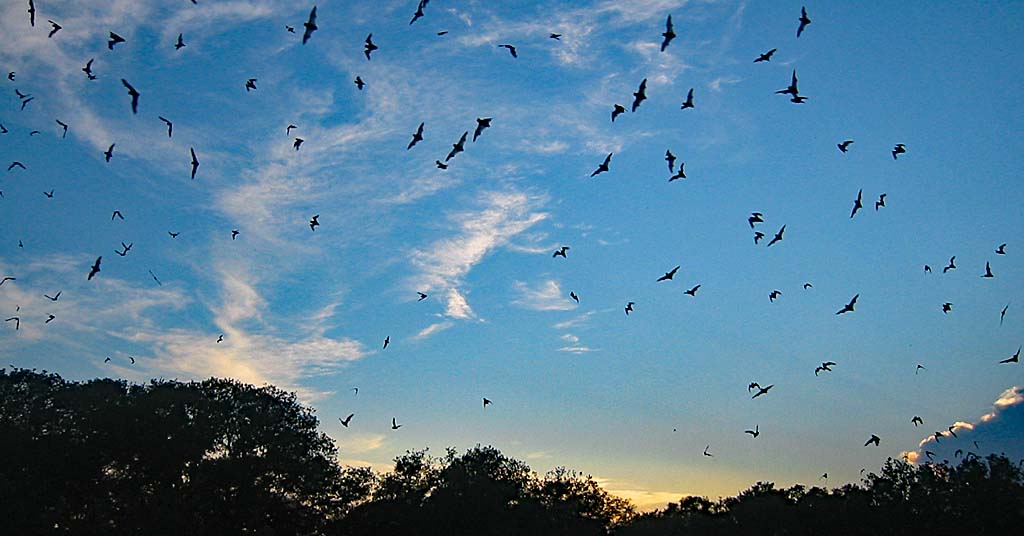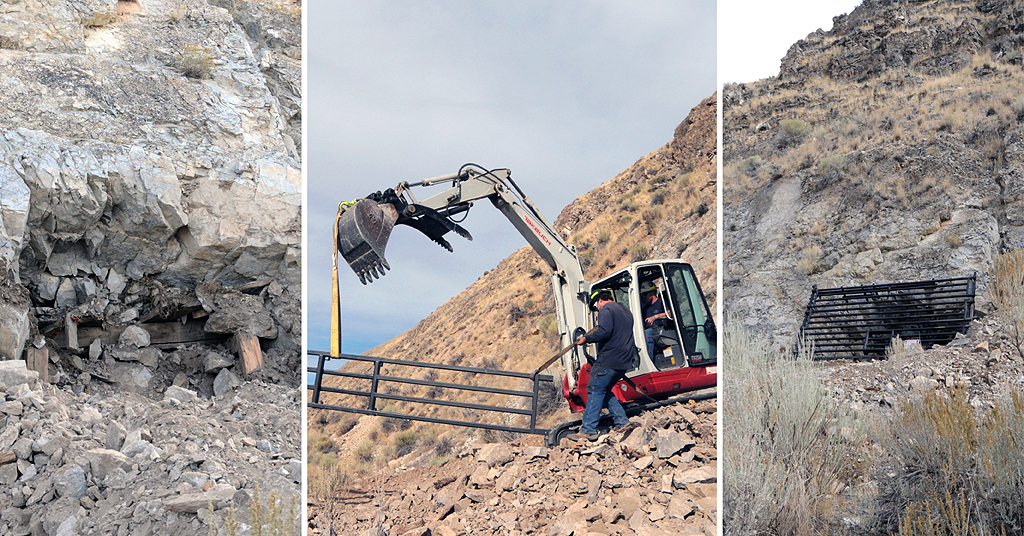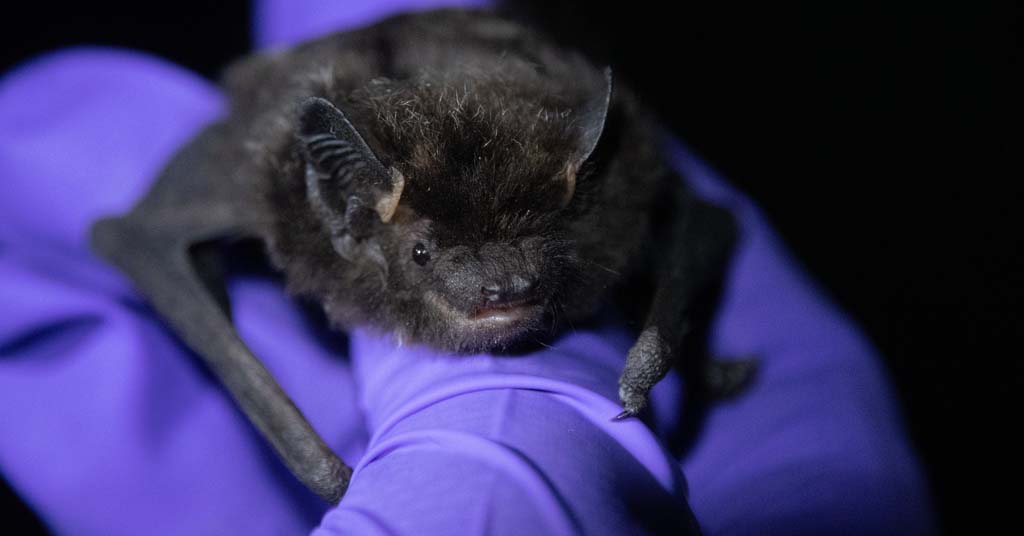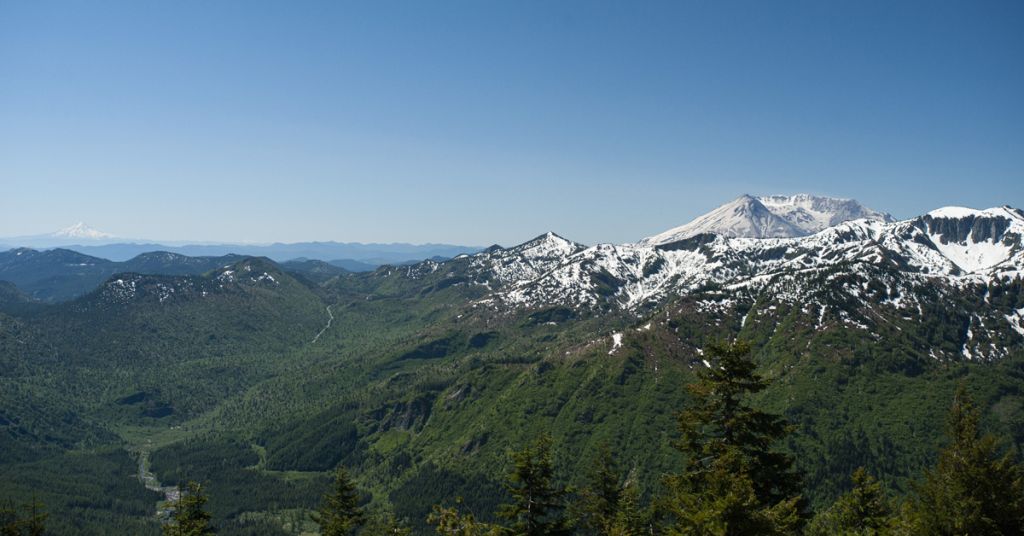Collaboration between government agencies and a mining company has transformed a dangerous but valuable property

Flying high: Bats in Idaho have a new home. File photo: Paul Cryan/USGS/Flickr
By Kendra Chamberlain. November 18, 2024. The bats of Bear Lake National Wildlife Refuge have a new roost to call home this winter.
An orphan mine, located on protected land around Bear Lake in southeast Idaho, was sealed up years ago to protect humans from wandering in. That meant the mine was also off limits to wildlife like bats.
The U.S. Fish and Wildlife Service (USWS) partnered with Idaho Department of Environmental Quality, the Bureau of Land Management, Idaho Department of Lands and the mining company Synesco to open the mine entrance so that bats can roost in the mine’s long, twisting tunnels.
The mine was officially opened to bats on Oct. 21.
Today, bat habitat is at a premium. North America’s 154 species are facing extreme population declines due to habitat loss, climate change and even wind turbines. Of those 154 species, 47 hibernate and so are also potentially susceptible to population declines from the scourge of white-nose syndrome.
That’s made old mines an attractive prospect for bat conservation efforts. Orphan mines are being repurposed across the country for bat habitat.
But USFWS biologist Daniel Nolfi told Columbia Insight the Bear Lake project was especially intensive because it required reopening a mine that was no longer accessible.
The entrance was excavated and then fit with a gate to keep humans out, but allow bats in. Synesco owns the claim on the mine and covered the cost of the project.

Making a bat cave: Sealed mine at Bear Lake National Wildlife Refuge (L); bat-friendly gate being lifted into place (C); bats can get in, people can’t. Photos: Dan Nolfi/USFWS
Mines may also help stave off the spread of white-nose syndrome (WNS), a disease that has ravaged bat populations across the United States.
WNS infects hibernating bats, rousing them from their sleep and causing them to burn all their stores of fat before winter’s end. Infected bats—often entire colonies—die of starvation.
The disease was first detected in New York in 2006, and has since spread west from state to state, killing an estimated 6.7 million bats along the way.
The fungus that causes the disease, Pseudogymnoascus destructans, or Pd, was first detected in Idaho’s Minnetonka Cave in 2022. That cave is right next door to Bear Lake National Wildlife Refuge.
“Research suggests that the temperature of hibernation sites may affect the severity of WNS,” Nolfi told Columbia Insight in an email. “Artificial habitat, such as mines, allow for more intensive control measures for WNS. Opening mines to bats can be done in such a way that desired temperature conditions are created, potentially leading to reduced WNS impacts to the bats that use these habitats.”
Nolfi said up to eight different bat species use Bear Lake National Wildlife Refuge, including little brown bats, a species that has seen significant population declines across North American due to WNS. [An earlier version of this story inaccurately stated that little brown bats are a federally endangered species. —Editor]
The USFWS’ Idaho office is engaging other mining companies for similar projects on both federal and private land in southeast Idaho, a region known for phosphate mines.
“The goal is to evaluate opportunities to provide bat habitat while maintaining closures for human safety,” said Nolfi.










